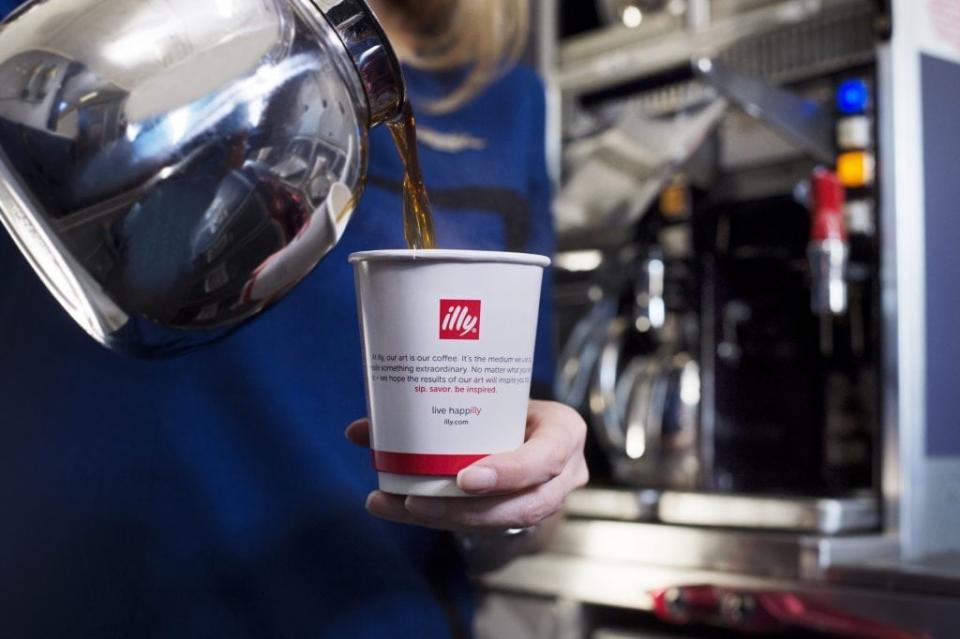U.S. Airline Employees Brace for Furloughs

No U.S. airline has contacted the nation’s largest flight attendant union about employee furloughs, but some members are beginning to see a request as inevitable after major U.S carriers moved Thursday to slash European flights as the coronavirus crisis heightens, said Sara Nelson, president of the Association of Flight Attendants-CWA.
“People understand that there is a real threat to the industry here,” Nelson said in an interview. “It is a real short trip from there to being worried about their job.”
Major global airlines are big bureaucracies, and it can take awhile to go into severe cost-cutting mode. But eventually, U.S. carriers no longer will be able to pay employees not to work and likely will need to cut jobs, just as they have during other times of uncertainty, including after 9/11.
Airlines generally cannot permanently lay off unionized flight attendants and pilots. Instead, they furlough them, cutting their jobs but allowing them to retain recall rights. By contractual obligation, furloughed employees are the first to be rehired when the good times resume.
But it can take awhile. After 9/11, American Airlines did not recall the last of its furloughed flight attendants until 2012.
Mitigation First
The Association for Flight Attendants, or AFA, represents flight attendants at several U.S. airlines, including Alaska Airlines and Hawaiian Airlines, but its biggest membership comes from United Airlines.
At United, Nelson said, the airline is required to offer “mitigation” remedies before it forces any flight attendants into furlough. They include offering leaves of absences and permitting flight attendants to share jobs, Nelson said.
United already has been encouraging flight attendants to take unpaid leaves, and for some, it is an attractive offer, Nelson said, since they can keep their health insurance, seniority and flight benefits.
“If you can afford it — if you have a second source of income, or you have a partner who has an income or you have just saved enough — then the furlough is quite attractive,” she said.
Next would come involuntary furloughs, which usually affect the most recent hires, per contractual language. Unions would be notified in advance that an airline is planning involuntary layoffs.
“Technically, have the airlines talked us about furloughs?” Nelson said. “No. But are people talking about it? Yes.”
In a discussion Tuesday with investors, United President Scott Kirby said he could not rule out furloughs.
“My personal No. 1 objective, and all of our No. 1 objectives as we’re going through this, is to make sure we take whatever steps are required for United to survive,” he said Tuesday at the J.P. Morgan Industrials Conference. “My second objective is to do so without involuntarily furloughing anyone. But that is the second objective. And if it takes hard stuff with the employees to get to objective No. 1 of making sure we survive, we won’t hesitate to do it. I’ll be sick to stomach, we’ll feel awful. But our No. 1 objective will be to make sure we get through to the other side.”
Pay Cuts
At times, airlines have come to unions to ask for contractual concessions, such as pay cuts, so the carrier could survive.
In 2003, for example, American’s flight attendants, who are represented by a different union, agreed to $340 million in wage concessions in concessions, allowing the airline to avert bankruptcy.
But Nelson said she has been having no discussions with airlines about concessions.
“Those happened in bankruptcy,” Nelson said. “There were discussions to try to avoid bankruptcy. That’s way too soon. We are not there at all. I don’t mean to do minimize the impact here but we are not there at all.”
Flight attendants at most airlines already have taken a defacto pay cut, Nelson noted, because they’re flying fewer hours than when the crisis began. Until recently, airline staffing was stretched thin, so many flight attendants could count on extra hours beyond the 80 to 85 hours per month they would typically fly. Some flight attendants had been working more than 100 hours per month, she said.
“There is not the same of flying to go around,” she said. “It amounts to an immediate pay cut.”
Subscribe to Skift newsletters for essential news about the business of travel.

 Yahoo Finance
Yahoo Finance 